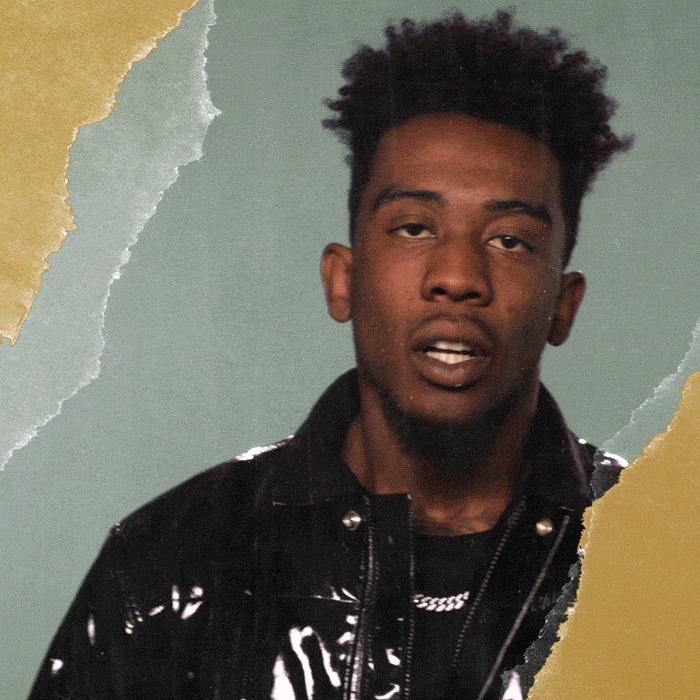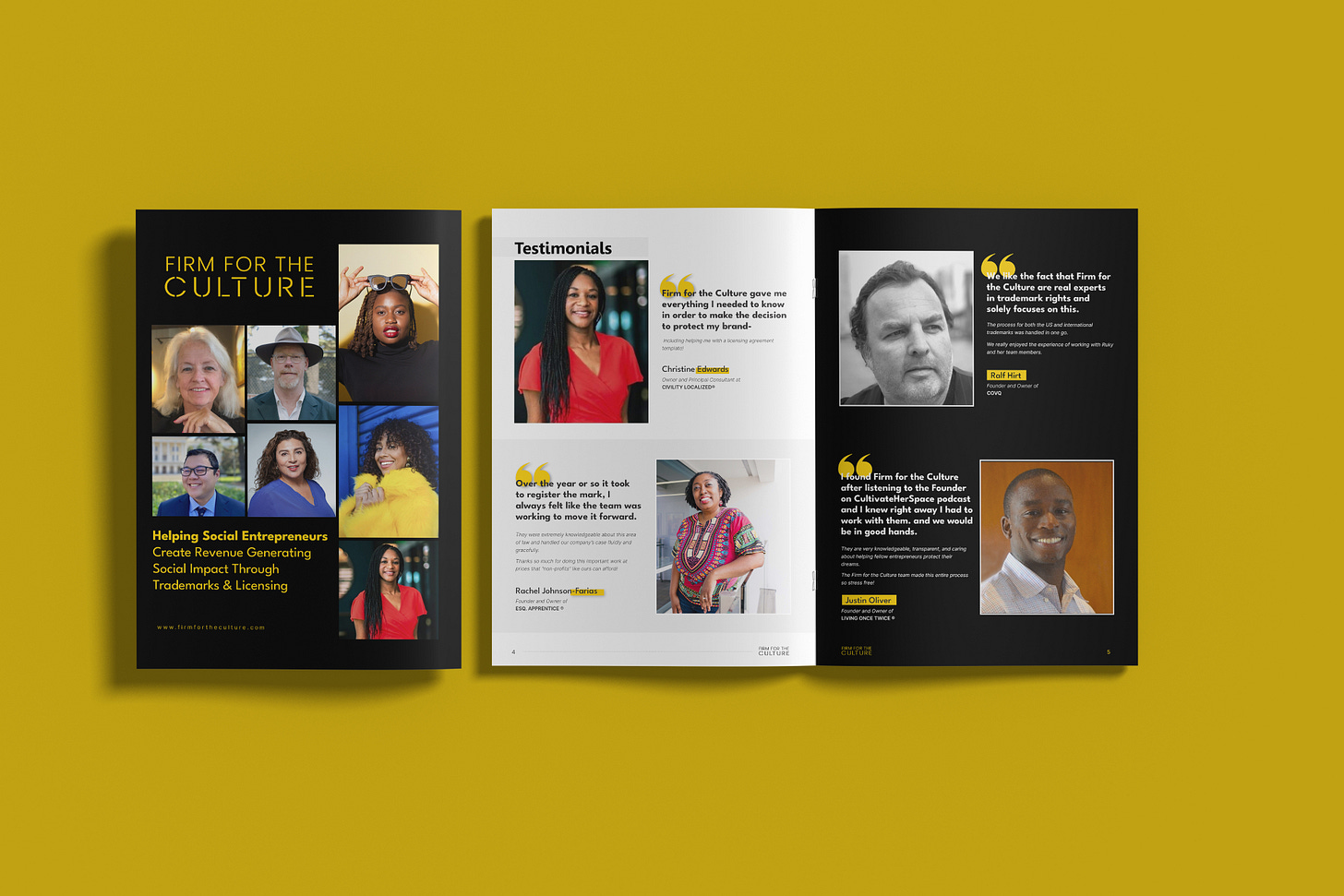Don't Be Kendrick. Be Beyoncé.
Why Filing Your Trademarks is just as Important as Creating the Culture. | I Am What an Intellectual Property Attorney Looks Like.
Hey Fam,
There’s a moment when culture and ownership collide—and that moment often slips by unnoticed.
We hear powerful lyrics about ownership.
We watch artists build global movements.
We witness the birth of trends that ripple across the internet, across industries, across communities.
And naturally, we assume: They must have that handled. That brand. That phrase. That name. Surely they’ve filed for it. Protected it. Locked it in.
But sometimes, even the biggest names leave their most valuable creations wide open.
That’s what led me down a recent rabbit hole.
I was thinking about something Kendrick Lamar said:
“IP, ownership, the blueprint is by me.”
It was bold. It was brilliant. It made me pause.
So I did what I always do when I hear creators talking about IP—I looked it up.
And here’s what I found.
Kendrick Lamar does have a few key trademarks on record.
He owns his name—“Kendrick Lamar.” That’s smart. That’s foundational.
But when it comes to the cultural moments he’s creating right now?
❌ No trademark for “Not Like Us.”
❌ Nothing for “Grand National Tour.”
That’s not a knock—it’s a pattern.
I looked up SZA next.
✅ Her name is protected.
✅ She’s filed for “Not Beauty,” her growing brand.
But again—no trademarks for her merch, her tour, or her song titles. No filings that reflect the full scope of her cultural impact.
Then I looked up Beyoncé.
And what I found couldn’t be more different.
Through her holding company, BGK Trademark Holdings, Beyoncé is filing with vision. Precision. Intention.
She’s locked in trademarks for:
“Cowboy Carter”, “Buckin”, “Beyinnce”, “Country Radio”, & “Rodeo Chitlin’ Circuit”
She’s not just shaping the narrative. She’s safeguarding it.
This isn’t about celebrity status.
This is about legacy. Longevity. Leverage.
So what does that mean for the rest of us?
In this Founders’ Letter, we’re going to bust some of the biggest myths regarding IP protection and culture, through the lens of some of today’s most influential artists. From these, we’ll cull out the strategic truths pulled from deep IP work, backed by receipts, and driven by one clear message:
But ownership? That’s the real flex.
Loving This Post?
Show us some love by adding a “❤️” or commenting below; this will make our hearts sing.
But First, Church Announcements:
We’ve got a new free guide just for you!
If you’re a social entrepreneur building something meaningful, don’t just make it memorable—make it legally yours.
📘 Download our Free 10 Ways to Protect Your Artistic Vision here
This must-read resource is designed for thought leaders, coaches, and consultants who want to lead with their ideas—without fear of theft or dilution.
If you’re building a values-driven, culturally rich brand, this guide walks you through exactly what needs protecting: your business name, logo, course titles, podcast, recorded content, books, and signature events.
You’ll learn the key differences between trademarks and copyrights, how to use both strategically, and why protecting your creative assets isn’t just smart—it’s essential.
Whether you’re just getting started or scaling your impact, this guide will help you own your genius and build boldly.
Your work deserves more than a logo. It deserves a legal legacy.
Now, back to our regularly scheduled program…. :)
You don’t need to headline a music festival, land a Netflix deal, or be a household name to protect what you’re building.
If you’re developing a course, building a podcast, launching a coaching program, or growing a phrase that’s starting to stick—you’re already sitting on valuable intellectual property. And that means it’s time to think about ownership
Trademark protection isn’t just for megastars or global corporations.
It’s for you—the creative, the organizer, the educator, the founder who’s building something original, culture-rich, and community-rooted.
It’s about making sure that when your brilliance spreads (as it should), your name, your work, and your legacy remain tethered to you. Because it’s not just about creativity—it’s about control. And you deserve both.
Going viral is not the same as building value.
You can spark a movement, shift the narrative, even give language to an entire generation—and still have zero legal ownership over what you created.
And for too many Black, Brown, and historically marginalized creators, that’s not just a risk. It’s a pattern.
We’ve seen the dances, the phrases, the aesthetics, the ideas—lifted, repackaged, and monetized by people and platforms who didn’t build them. People who saw the cultural influence, but not the creator. People who profited, while the originators were pushed to the margins.
It’s not because the work wasn’t brilliant. It’s because it wasn’t protected.
Here’s the truth: cultural influence without legal infrastructure is vulnerability.
If you’ve coined a phrase, led a viral campaign, launched a podcast, built a signature course, or developed a body of work that others recognize, you’ve created something valuable. But if it’s not secured—via trademark, copyright, or both—then someone else can legally duplicate, monetize, or dilute what you’ve built. And they often do.
We’re in a moment where ownership matters more than ever. Not just for our livelihoods, but for our legacies.
Because building culture is powerful. But protecting it? That’s transformational.
Visibility is not the same as security.
You can be everywhere—retweeted, stitched, quoted, reposted—and still be unprotected. Because virality gives you attention. But it doesn’t give you legal standing.
And if you’re a thought leader, coach, or creative entrepreneur, attention without protection is a trap.
We’ve all seen what happens: creators go viral for a course name, a tagline, a powerful framework—and before they can even trademark it, someone else launches a knockoff. Sometimes it’s a major influencer.
Sometimes it’s a big brand. Either way, the originator ends up watching their genius spread… with no credit and no coin.
This is where ownership becomes the dividing line.
When you secure your ideas with trademarks and copyrights, you set legal boundaries. You build moats around your intellectual property. You create leverage—so that if someone does try to co-opt your work, you have tools (not just tweets) to protect it.
Virality is fleeting. But ownership compounds.
So don’t just aim to go viral. Aim to go protected. Aim to go long-term. Aim to own what you create, so you’re not just a moment in culture—you’re a force in the marketplace.
You don’t need to wait until you’re “big enough.”
You don’t need to go viral first.
You don’t need to be in the headlines.
If it has value now, it deserves protection now.
You’re already creating impact. The next step is filing to make sure it’s yours.
Beyoncé knows that. She’s showing us what it looks like to move with purpose and file accordingly.
Drop it in the comments. I’d love to hear your story.
Need Help Protecting Your Creativity?
If you are unsure—or if you know you need to take action—reach out to us.
We have helped countless founders and creatives safeguard their intellectual property, and we would love to do the same for you.
If you need further guidance, reach out to me and my team at Firm for the Culture.
We’re here to help you navigate the copyright, trademark, and thought leadership journey.
Can’t wait to help you protect your dynamic impact.
And #ThatsAWrap
The Doors of the Church Firm Are Open
Thanks for reading
See you next time.



















Really great article!